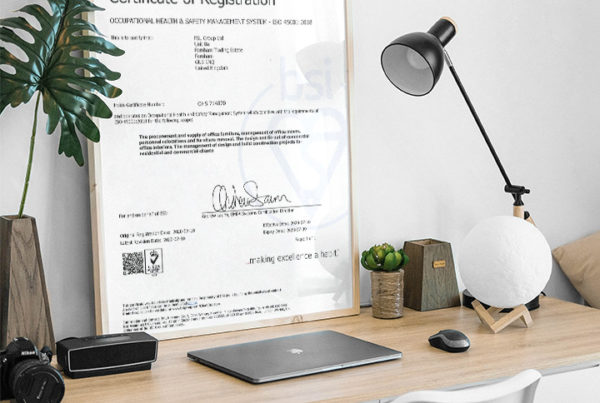We live in an era where the amount of employees working from home continues to rise and advanced communication and project management apps and technology enables any company to work with any appropriate candidate worldwide.
More and more information like this is dropping into the headlines daily. It really is no surprise that employers have no choice but to step up their game when it comes to providing a more fluid and dramatically less linear way of working for employees if they want to retain the best in the industry.
How can forward-thinking businesses snare excellent candidates these days? Stealing them away from remote working and freelance offerings without compromising on a carefully cultivated office environment?
Activity Based Working: What Is It?
If you are interested in creating an office environment that benefits your business and every single member of your team, activity based workplace design should be high on your agenda.
The concept was first properly formed in 1983 by Robert Luchetti, and the term activity based working coined in groundbreaking book The Art Of Working by Erik Veldhoen. In the early 90’s, the implementation of the concept occurred in the Netherlands and has spread worldwide since.
It works on the basis that rather than trudging in to the office to spend the day at your allocated desk, you simply don’t have one single assigned space to work in, you actually have many. You can choose from a workspace design with a wide selection of different zones or areas, designed to support certain types of task. Workplace consultants will create spaces to facilitate needs such as focus, working as a team, or for training.
As each area has to accommodate the needs of a wide range of users and it has to be flexible for that reason. When implementing ABW managers and supporting staff have to first be on board with the huge change that comes with this new way of working so that they are in a position to help employees transition as smoothly as possible.
The Benefits Of Activity Based Working
Who doesn’t love a desk? Lots of employees enjoy their own dedicated workspace, with their own cacti, maybe a picture of the kids and the comfort of knowing that is their space to work and nobody else’s.
So why change anything?
Activity-based working comes with many benefits, predominantly recognising that employees do have a wide range of workstyle needs depending on the type of task they need to complete. Rather than have a ‘one-size-fits-all’ desk, ABW staff can enjoy the choice of workspace, enhancing their own productivity.
Key benefits of activity based working (source design and management of activity based workplaces, Theo J M Van der Voordt, Delft University Of Technology)
- Architecture and workplace design appreciated by staff
- Better communication in the workplace in general
- Easier socialisation
- Ease of exchanging information
- Better office dynamics
- Better office acoustics
- More comfortable furniture
With the right workplace design and the right implementation, there are many benefits to ABW for many different types of business and organisation.
Is Activity Based Working Right For Everyone?
A study by Leesman Index suggests that certain types of workers are pretty attached to their workstation and they represent 30% of the workforce, and a further 41% will explore other workspaces, but still remain tethered to a workspace to call their own.
This does represent a significant issue for businesses trying to transition to much better working practices, especially as certain job types are so linear and straight-forward, they don’t necessarily call for a more flexible way of working.
Another potential hurdle for ABW is office ergonomics, or rather, ensuring that the ergonomics in the workplace are correctly integrated into the shared zones created by workplace consultants.
Statistics tell us that over 3 quarters of British workers spend up to 9 hours at their desk every single day with over a third of those people spending up to 6 hours seated. Those figures alone tell us that a different way of formatting an office is likely incredibly good for the health and lifestyle of the British workforce. However, additional figures reveal that a change like activity based working needs to be paired with strong ergonomics of the new workspaces.
64% of workers feel their office environment has negatively impacted their health, 45% don’t feel their employer cares about their health and 26% aren’t even aware of risk assessments for workspaces.
So a change in the office layout without the right risk assessments and ergonomic consideration could spell disaster for any company looking to keep their employees healthy and happy (and looking to avoid being sued!).
ABW can be ergonomically sound, but the organisation implementing the change should seek to employ workplace consultants with expertise in office ergonomics, ensuring that health and safety are a central feature of the new commercial fit out.
“The secret to getting ahead is getting started” – Mark Twain
Adopting an activity based working office design is a great way for businesses to begin future-proofing, offering a flexible and modern environment for their employees. The focus is on we and not I, and on the work produced, not on the way it is produced. With ABW there is no specific place for work to be completed, but also, there are multiple spaces that it can be completed.
Working in this way does require a transitional period, experienced workplace consultants and a detailed analysis and approach to implementation for any chance at a successful result.
If successful, activity based working can bring a wealth of benefits to any company, initially helping to retain and attract employees with a focus on what they can do, not where they can do it. Businesses looking to invest in activity based working are cultivating a modern and truly flexible workspace designed to accommodate optimum productivity, health and happiness.





